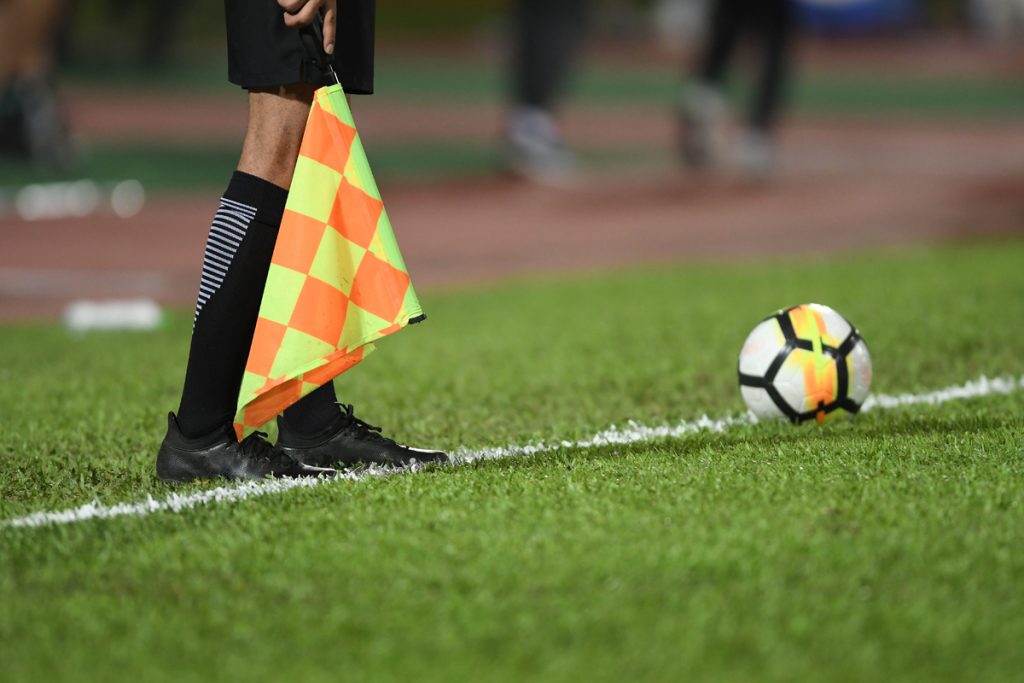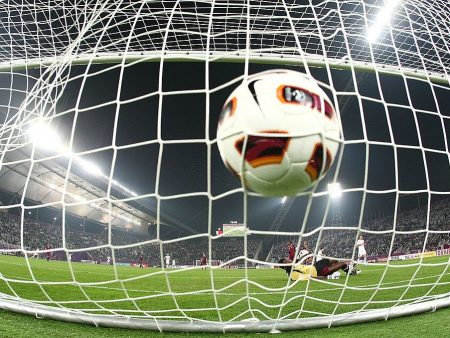
In this article, we’ll examine why fouls are called fouls, what happens when a foul occurs in various places on the pitch, and the potential consequences of committing a foul or continuing to commit fouls.
The History of Fouls In Football
The earliest reference to an indirect free-kick being used to punish anything dates all the way back to 1872. In this instance, handball was involved. Two more years would pass before the referee, who was added to enforce the regulations, was first mentioned as a match official. The warning and dismissal of unruly players also made their debut appearance in the game’s rules.
Football was the first sport to introduce penalty cards as a way to honour the referee’s judgment; since then, numerous other sports have followed suit. It is interesting to note that FIFA did not insist on this regulation until the 1970 World Cup, and it was not until 1992 that it became universally enforced. The regulations as they exist now obviously took a very long time to develop. Before the referee was introduced, the idea that the captains of each team were responsible for upholding the laws of the game would not be acceptable today.
What Exactly Is a Football Foul?
Referees define a foul as an unfair conduct committed by one or more players that they believe violated the rules of the game. If the foul occurs inside the box of the offending team, the offending team receives a free kick, otherwise, it receives a penalty. One of the pillars of football is the punishment of fouls because they prevent the game from spiralling out of control.
The Types Of Fouls In Soccer and What Behaviours Result in a Foul? What Is An Indirect Free Kick?
A player may receive a free kick for any of the following scenarios:
- Leaps or charges against another player
- Kicks towards another player or tries to kick them
- Pushes
- Reckless engagement in tripping other players, controlling the ball, holding a grudge, attacking an opponent with bites or spit
How Is a Foul In Football Punished? When Are Yellow and Red Cards Given?
Football referees will allow matches to resume with a free kick if a foul is called. The game will restart with a free kick if a player from Team A is found to have fouled a player from Team B. A free-kick is a ball kick in which the opposition side is not permitted to intervene. Depending on the situation and the status of the game, the free kick when a team is fouled in their own half will typically be a pass to a teammate or a long pass into the opponent’s half.
The opposing side may construct a wall not far away from the ball if a team is attempting to score from a free kick. They can deflect the shot by jumping up or by remaining still in the wall.
If more severe punishment is required or the player has committed many fouls, a yellow card may be issued as a result of a totting procedure. If a foul is deemed to be very careless, a red card may be issued and the player is sent off.
Another tool for keeping the players on the field under control is the use of yellow and red cards. The system of yellow and red cards simply implies that a player will receive the appropriate punishment if they commit enough fouls or act recklessly.
Penalty Cards: Yellow Cards
When a player violates any of the regulations outlined below, they are issued a yellow card as a warning. Players will need to be extra careful after receiving a yellow card since they are aware that one more mistake might result in a second yellow and a dismissal. Any violation that falls under one of these six categories may result in a yellow card:
- Unsportsmanlike mistakes
- Recurring intentional mistakes
- Delaying the game’s resumption by failing to maintain the proper distance from a free kick or corner
- Leaving or entering the playing pitch without the referee’s express consent
Penalty Cards: Red Cards
When a player receives a red card, they are instructed to leave the pitch immediately. When a player repeatedly violates the rules, it may result in a second yellow card, while a straight red card may be given for a more significant infraction. One may receive a red card for:
- The second caution
- Unprofessional behaviour
- Violent behaviour
Does the Penalty for a Foul Vary Depending on Where It Occurs on the Pitch?
Yes, depending on where on the field the foul occurred and how the game was going at the time, a player who fouls another player will receive a different punishment. A free kick will often be given if an attacking player fouls a defender in the defender’s half.
The GK is the only member of the defensive team who may attempt to prevent the attacking player from scoring. The goalkeeper is free to move along or beyond the goal line, but not in front of it. This has recently gained a lot of attention thanks to VAR, with goalkeepers saving penalties only to have them retaken because they were deemed to have crossed the line.
All players save the goalie and the person taking the penalty must remain outside the penalty area. Once the ball is in play, they are free to enter the penalty area, with the attacking players attempting to advance whether the shot was saved or hit the post. If the ball is still in play, the defensive team will try to get rid of it.
A free kick will be given when an attacking player is fouled in the half of the opponent; if it is taken in the appropriate area, a goal attempt may be possible. If the angle is off or the ball is too far from the goal, the attacking side may try to take a quick free kick and pass the ball to a player nearby or cross the ball into the penalty area. If an attacking player is considered to have been fouled in the opponent’s penalty area, a penalty is awarded. In the event of a penalty, one attacking team member will get an opportunity to shoot from the spot.
Why Do Professional Fouls Matter?
Certain teams’ strategies encourage a more physical aspect of the game that doesn’t always adhere to the rules.
Football clubs who desire to play football and score goals would probably be at a disadvantage without fouls. If there were no consequences for fouling, incredible displays of individual brilliance or brilliant teamwork would continuously be cut off too soon.
Indirect and Direct Free Kicks: What Are They?
Free kicks in soccer may be either direct or indirect. When a free kick is designated as a direct one, it can be used as a direct shot. To attempt a shot on goal from an indirect free kick, the ball must first be touched by another player.
When is a free kick indirectly awarded? In general, a goalkeeper receives an indirect free kick when they violate a certain rule inside their own penalty area. These mistakes consist of:
- Touching the ball with heir hands after a teammate has purposefully kicked it at them
- Using their hands to touch the ball after receiving it directly from a teammate’s throw-in
In addition, a team may receive an indirect free kick if the opponent’s player:
- Demonstrates risky play
- Hinders an opponent’s progress by preventing the GK from releasing the ball
- Commits a play-stopping offence that doesn’t justify a direct free-kick
When an indirect kick is granted, it is taken from the location of the foul. A goal kick is given if the indirect kick enters the goal before touching another player. The player who takes the kick is not allowed to touch the ball again until it touches another player.










